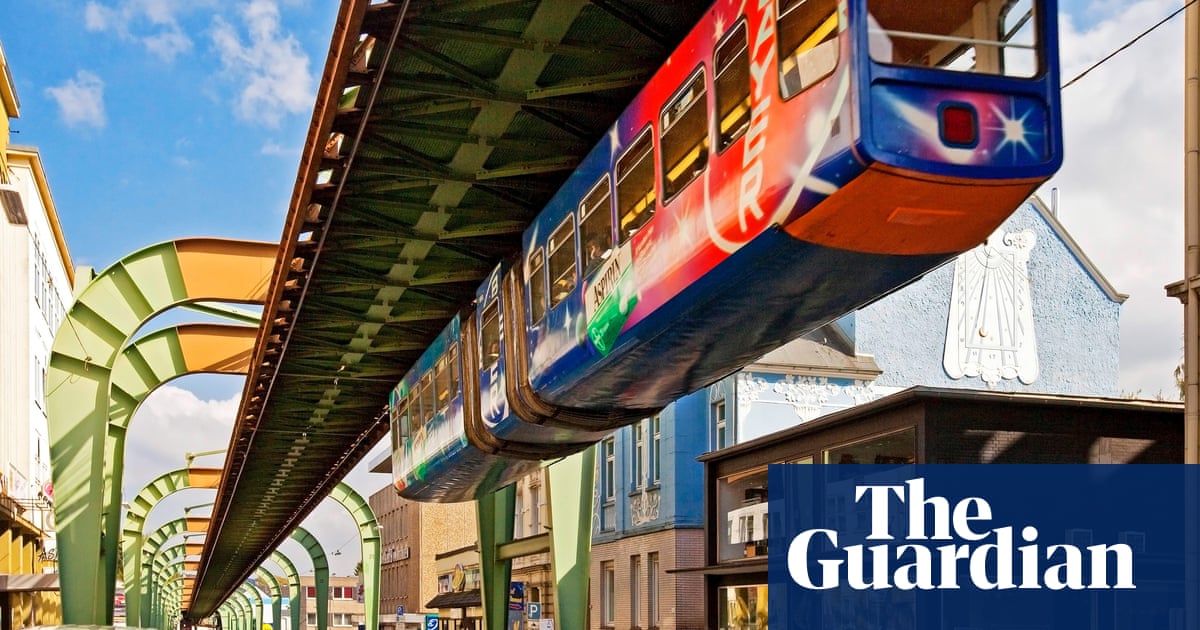The Llŷn peninsula projects a Tolkienesque mystique as you view it from Cardigan Bay. On a clear day, its jagged, alluring and yet foreboding topography – stretching outward into the Irish Sea – is easily visible from as far south as Aberystwyth. No wonder it was chosen as the location for the recent House of the Dragon Game of Thrones spin-off series. It’s also been my constant backdrop for the past few days as I walk the Wales Coast Path exploring the relationship of the people of this land to the sea – how it has shaped society, how humanity has tried to tame it and how the sea will inevitably prevail.
Now, having reached Porthmadog (a town built on reclaimed sand from the Glaslyn estuary), I’m ready to experience the entrancing, wild-looking beauty of the Llŷn up close. I have three walks planned over the coming days. The first is a gentle six-mile stroll from Borth-y-Gest (one bay over from Porthmadog) to Criccieth Castle. As I set out, the tide is retreating at a rate that makes me think someone has pulled the plug on the entire estuary. The small boats bobbing in the bay become statues as they are stranded in the sand.
A large jellyfish lies on a beach directly below Porthmadog golf course. Two kids poke it tentatively with a piece of driftwood. Buried in the sand are huge slabs of micro-layered black and grey slate. They look like stranded giants – could these rocks have inspired the Mabinogi story of Brân the Blessed whose gargantuan severed head was carried back to the Llŷn by his loyal knights after a fateful battle with the Irish king Matholwch?
From the top of Graig Ddu (Black Rock), I can see Criccieth Castle, standing broken but proud on the cliffs in the centre of the town. Unlike many of Gwynedd’s Norman castles, this was built in the 13th century by the Welsh king Llywelyn the Great, as a demonstration of his power and authority over rival Welsh princes.
The artist JMW Turner painted the castle on a tour through Wales in 1835. His watercolour captures a great storm rolling in and breaking over the castle. In the foreground, local people gather to retrieve items being washed up by the sea. It is a theme that has repeated through the centuries. On the night of 27 October 1927, a violent storm – combined with a potent spring tide – hammered into the Llŷn peninsula. The storm surge and waves destroyed homes built below Criccieth castle with such ferocity that it was decided never to rebuild there.

The second of my walks begins in Pwllheli, meandering along the town’s West End Parade and providing impressive views of the Rhinogydd mountain range, part of Eryri national park (Snowdonia). The beach below me is empty and the sand dazzling white, though the footprints on it suggest a small army of early morning dog walkers have already been and gone. Marram grass swishes and ruffles as the wind flows through it.
This area of Pwllheli was the vision of Solomon Andrews, a Cardiff-based developer and entrepreneur who had been inspired by the Victorian beach resort of Llandudno. Starting in 1893 Andrews built beachfront properties and the West End Hotel on morfa (salt marsh) situated between the mouth of the Afon Rhyd-hir and the sea. He also constructed a tramway connecting Pwllheli with his mansion, Plas Glyn y Weddw, a few miles up the coast.
Today, the tramway is part of the Wales Coast Path and I follow it until I reach Traeth Llanbedrog, a pretty mini crescent bay flanked, at the top of its sandy beach, by a row of multicoloured huts. I climb up through Plas Glyn y Weddw’s ornamental gardens to the top of Mynydd Tir y Cwmwd. The resort of Abersoch – one of the most desirable (and expensive) beach towns on the Llŷn lies directly ahead. In all the days of walking the Welsh coast, I’ve never seen so many speedboats and jetskis carving up the sea. It looks more like a scene from the French Riviera than the coast of north Wales.
In the far distance lies Ynys Enlli (Bardsey island), spiritual home to Cadfan, a sixth-century Welsh saint whose monastery was recognised as one of the holiest sites in all of Europe. Over the centuries Bardsey’s mystique increased thanks to oral storytellers who claimed that the magician Myrddin (Merlin) was buried on the island and perhaps, even, that King Arthur had forged his sword, Excalibur there.

My final walk is on the north side of the Llŷn and promises to be the most challenging – a 13-mile uphill hike from the old herring fishing village of Porthdinllaen to the town of Trefor, a few miles south of Caernarfon. Across the bay, I can see the red facade of the Tŷ Coch pub, an Insta-celebrated watering hole nestled among fishers’ cottages.
This section of coast path has been badly eroded – so much so that walkers are diverted inland. When I stop for a coffee at a beachfront cafe in the village of Nefyn, a young woman asks if I will sign a petition to rebuild the path.
“It’s so important for the tourist trade. It will be a disaster if it isn’t repaired,” she says.
after newsletter promotion
At St Beuno’s Church (named for another early Celtic saint who was known as the patron saint of sick cattle), the path heads out over the headland, providing a view of open water stretching all the way to Holyhead at the tip of Ynys Môn. Ahead of me is a long, gentle crescent bay. At the top of its pebble beach lies a set of old, alien-looking buildings that sit below a hollowed-out cliff face. I’ve arrived at Nant Gwrtheyrn, once one of the most important quarries in all of Europe and source of the granite that paved city streets throughout the Victorian world.
More than 200 people lived in this isolated coastal village at one time but the granite industry fell into decline after the first world war and Nant Gwrtheyrn was deserted by the early 1950s. It would have been left to ruin were it not for the vision of Carl Clowes, an English doctor who relocated in 1970 to a small village a few miles inland. Clowes’s mother was Welsh and he was keen to raise his children as Welsh speakers. The first Welsh Language Act had come into effect in 1967 and Clowes identified a growing need for adults to learn Welsh. He led a community campaign to transform the derelict hamlet into what is now the Nant Gwrtheyrn National Welsh Language and Heritage Centre. When it fully opened in 2003, the Welsh indie rock band Super Furry Animals played a concert to celebrate. Two of their members, Cian Ciaran and Dafydd Ieuan, had a special reason for performing. Carl Clowes was their dad.
The last stage of the walk involves climbing up a stupidly steep road and I’m feeling all of my 57 years as I trudge up the valley. Only later do I learn that it wasn’t until the 1930s that a car succeeded in driving up the hill, so steep was the gradient and so sharp the switchbacks.
The path levels out as it traverses the peaks of Garn Fôr and Garn Ganol. This is where House of the Dragon has been filming – a nearby disused quarry doubling for Westeros’ Dragonstone Castle. Finally, I make it to Y Tafarn, Trefor’s lone pub. A flock of bedraggled sheep mooch around in the front garden like bored teenagers. I chat with the landlord about all the filming taking place around Trefor as he pours me a pint. I ask him if any of the actors have come in for a drink.
“Oh yeah, we had Rhys Ifans last week,” says the landlord, before adding: “Personally, I’m not that fussed with all these celebrities. As Rhys said: ‘You’re the only pub that doesn’t want my photo on the wall.’”
Seascape by Matthew Yeomans (University of Wales Press, £18.99) will be published by on 13 March. To support the Guardian and Observer, order your copy at guardianbookshop.com. Delivery charges may apply

 3 months ago
138
3 months ago
138

















































